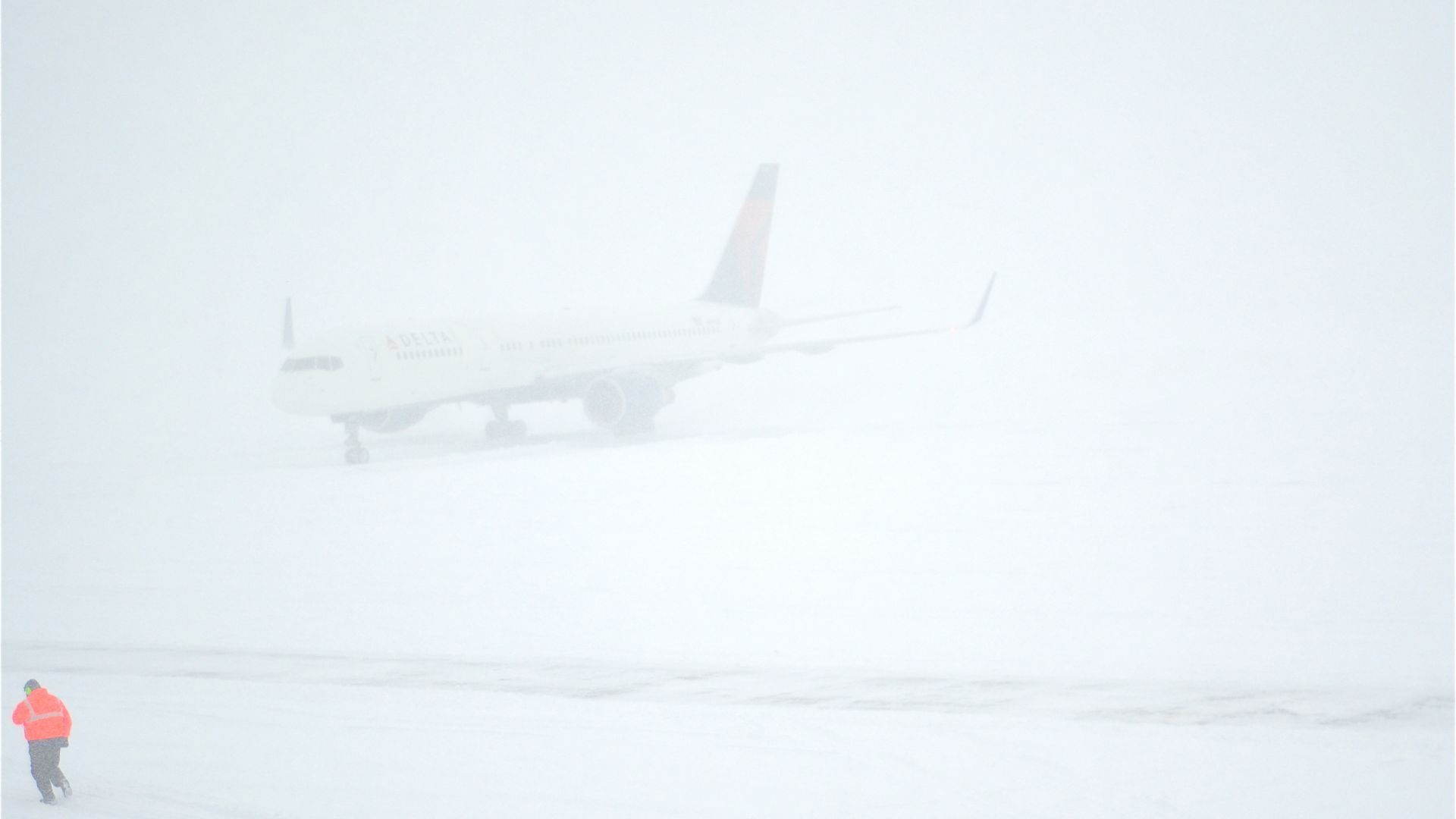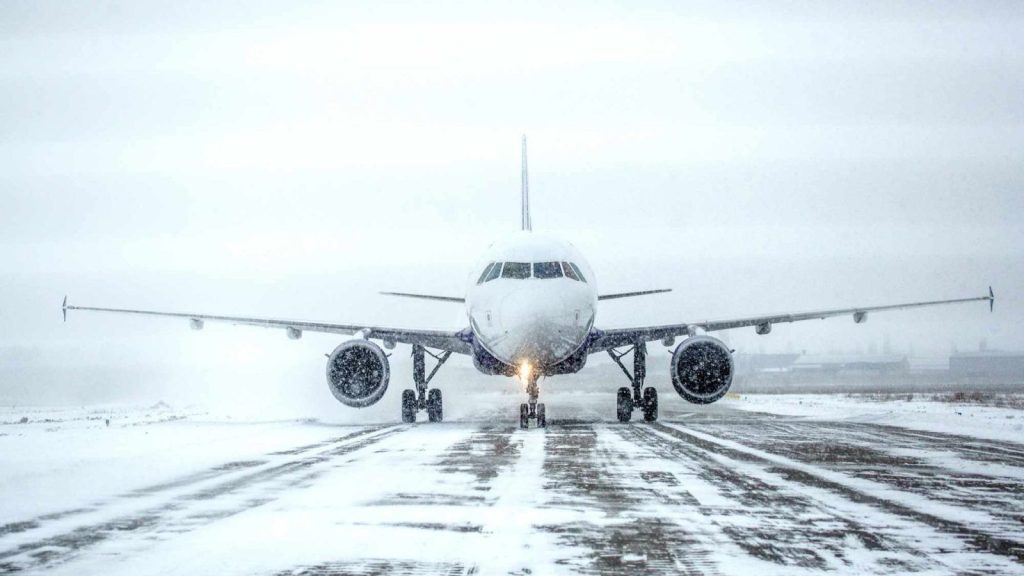
For some, flying can be a stressful experience. After all, about 40 percent of the general population report having some form of fear of flying. Much of this apprehension comes from not understanding how airplanes work, especially in adverse weather conditions including rain, wind, and, worse, cold temperatures that can add a layer of frost to the plane. But how dangerous is frost to a flight?
“Frost, snow and ice adhering to an aircraft, particularly the wing and tail surfaces, pose significant risks,” David CohenDean of the College of Aeronautics at Lynn University in Boca Raton, Floridaand also a retired Air Force colonel and command pilot, shared with Travel + Leisure. As he pointed out, the reason is twofold.
This is why frost on an airplane is dangerous

“First, the shape of the wings and tail, while seemingly simple, is the result of complex calculations that aircraft manufacturers have spent years developing. The length of the wing, the curvature, the distance between the leading edge and the trailing edge, and the angle at which the wing is attached to the aircraft are designed for maximum lift efficiency, reduced drag, and optimum fuel economy. The wing achieves this by causing the air passing over and below it to create different pressures and forces, which create lift.”
As Cohen explains, any change to this very specific surface shape and size can reduce lift and increase drag, making takeoff and flight difficult.
“This is mostly manifested by 'contaminants' on the wing, such as frost, snow or ice. In fact, NASA studies have shown that frost as small as 80-grit sandpaper can reduce lift by 30 percent. This is because air is no longer moving over the wing in the way it was designed to, and therefore not creating the lift the wing was designed to provide.”
Cohen also added that the water in frost, snow and ice carries a certain weight.
“If just one inch of ice or snow were present on the wing of a Boeing 787, it would increase the weight by about 5,000 pounds,” he said. “While most airliners are rarely operated at their maximum capabilities, carrying an additional 5,000 pounds of ice or snow can hamper flight. The aircraft’s performance in these conditions may not meet the expectations of engineers and flight crews.”
So once you combine this reduced lift and this extra weight, “it's clear why the FAA Bans Takeoffs with these contaminants on board any aircraft, unless approved deicing/anti-icing procedures are carried out prior to takeoff.
The good news is that pilots have many ways to combat these problems. Cohen noted that before takeoff, pilots physically inspect the plane, walking around the plane to visually inspect it, examining its general integrity and, in bad weather, checking for ice and snow, and walking around the cabin to inspect the wing surface through the window.
“Based on these observations, as well as air temperature, relative humidity, precipitation and the weather forecast for the next two hours, conditions may dictate that the aircraft be subjected to a deicing/anti-icing process prior to takeoff,” Cohen said. “The decision is also influenced by pilot judgment, airline policy and FAA requirements.”
This de-icing process is probably familiar to frequent flyers who have sat on the tarmac, as the heated glycol-based solution is sprayed onto the plane's surface, giving the air a distinct odor.
“The heat helps melt any contamination that might already be on the plane, and the glycol keeps moisture from freezing,” Cohen said. “Passengers can see this process through the cabin windows in the form of a viscous orange liquid covering the plane and the windows.
But it has to be done quickly, Cohen pointed out, because the heated glycol can only be useful on the plane for 30 minutes. If the plane hasn’t taken off in that time, it may have to be turned around and sprayed again. “It’s not uncommon for an airplane to be sprayed multiple times before departure, as pilots, ground crews and air traffic controllers deal with the complex ballet of treating and then getting planes off the ground in the face of reduced visibility, low clouds and freezing precipitation,” he added.
That said, should passengers be concerned about freezing?
“There’s a tongue-in-cheek saying about air travel: ‘Got time on your hands? Get on a plane!’ In 2023, U.S. airlines scheduled more than 600,000 flights. Less than 1.5% of those were canceled, and more than 78% of flights arrived within 15 minutes of their scheduled departure time.
“It’s pretty remarkable when you think about the amount of equipment, personnel, technology and uncontrollable weather conditions involved,” Cohen said. “That’s not to say there’s not room for improvement, but what I’m saying is that passengers should worry less about freezing or winter conditions. Instead, they should be prepared to be patient and understanding, knowing that the airline, crew and everyone else supporting their journey will never put them in harm’s way.” flight cancelled or delayed This can certainly be a source of frustration and anxiety for a passenger, but they should be reassured that their safety will never be compromised by a schedule or the bottom line of the professionals tasked with getting them to their destination.
(Photo credit: iStockphoto/Getty Images)
This story first appeared on travelandleisure.com
Related: The Scientific Reason Why Planes Sometimes Appear Frozen In Flight
Note:
The information in this article is accurate as of the date of publication.


